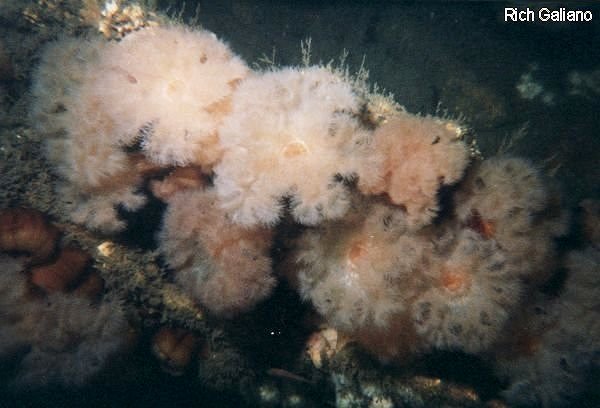Sea Anemones
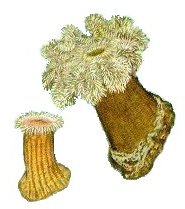
Frilled Sea Anemones
Sea anemones are found from the intertidal zone to extreme depths. Some live attached to solid objects, others burrow in sand or construct tubes. They feed primarily on plankton.
Sea anemones feed through a mouth located in the center of its tentacles. Waste is regurgitated through the same opening. The tentacles sting zooplankton or fish that pass too close, and the anemone swallows its prey whole. Most anemones cannot sting humans with any noticeable effect.
Small anemones may hitch a ride on a hermit crab, an arrangement that is beneficial to both. The crab is protected by the anemone's stingers, and the anemone gains a degree of mobility otherwise impossible.
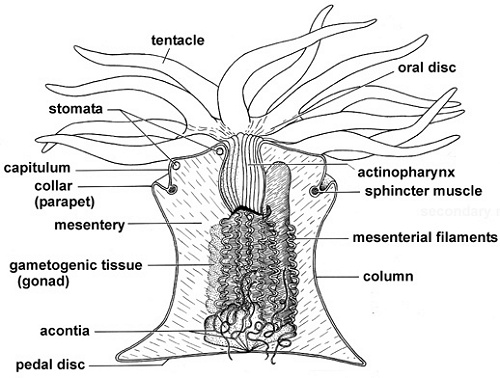
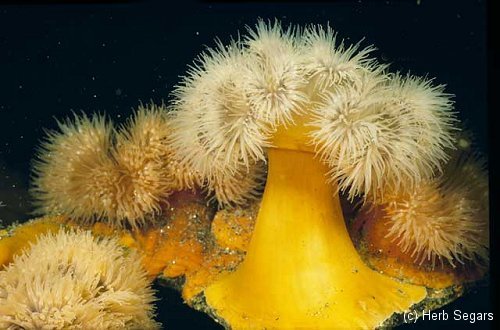
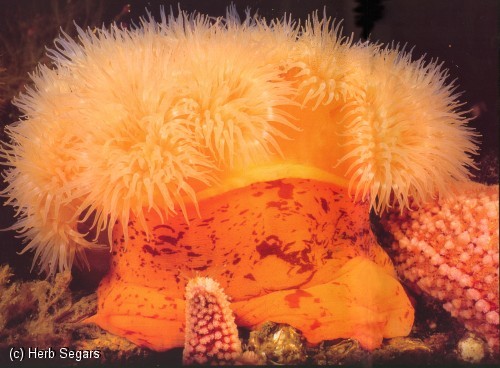
The Frilled Anemone Metridium senile ( above, to 4" ) can be brown, orange, pink, or even white. It resembles a flower when its tentacles are open and extended, but it can retract these tentacles into its center. The frilled anemone can be found in the mid and upper intertidal zones, but it can also be found well below the low tide mark. Its range extends from Delaware north to the Arctic. Its body is divided into three parts: the base or pedal disc, a stalk, and numerous protruding tentacles.
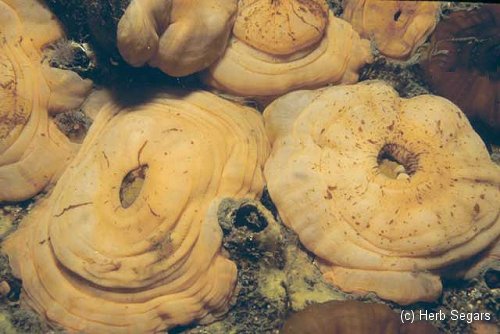
The Frilled Anemone is the largest and most conspicuous sea anemone in our area, common from subtidal jetty rocks to the deepest shipwrecks. You would need to be in the right place and have a sharp eye to find the rest of the anemones depicted here:
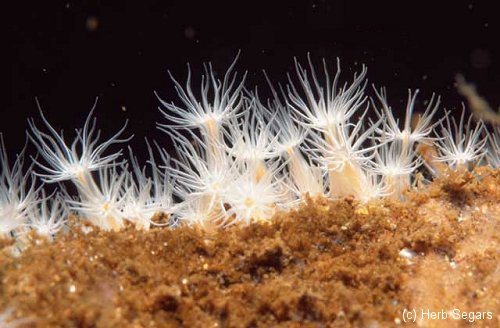
The Lined Anemone is found in numbers great enough to carpet the bottom in places. Its range is from Cape Cod to Cape Hatteras. They live among tubeworms and other growth on and under rocks; from below the low tide line to water more than 70' deep. The young are parasites on Comb Jellies. The burrowing adults grow to 1-1/2 inches.
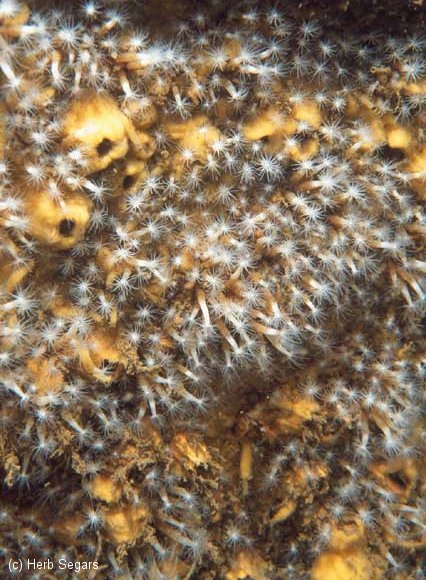
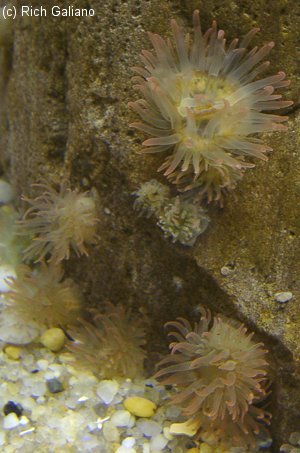

Striped Sea Anemone
Tiny (1/2") Striped Sea Anemones ( above and right ) are found in rivers and estuaries and other protected areas. They are not native; it is thought that they originate in Japan; they are also found in Europe. Striped Anemones reproduce asexually by budding.
Rather than living on a substrate, Burrowing Anemones ( below ) live in it, burrowing and sometimes constructing tubes in sandy or muddy bottoms, both offshore and in bays and inlets. The buried body of the animal is long and worm-like, and the tentacles are withdrawn deep down into the sediment at the slightest disturbance, much like many fan worms. In fact, fan worms and burrowing anemones are a remarkable example of convergent evolution ( for those who believe in that sort of thing. )
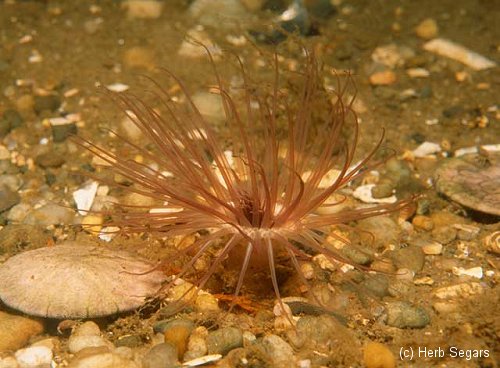
Note the two rows of tentacles.


